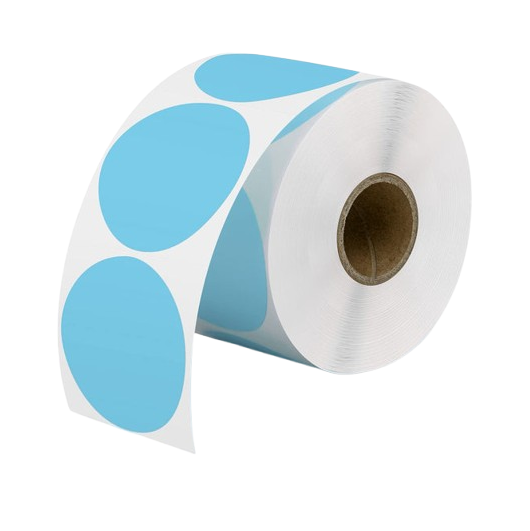Self-adhesive labels have these hidden advantages! Industry secrets that 90% of companies don't know
In the packaging and labeling industry, self-adhesive labels seem to be an "inconspicuous" existence, but they are a key tool for corporate brand communication, efficiency improvement and even cost control. Many companies only regard them as simple stickers, but ignore the industry-level advantages hidden behind them.
1. Production efficiency revolution: a leap from "minute level" to "second level"
Traditional labels (such as heat shrink labels and wet glue labels) require complex gluing and drying processes, which are time-consuming and labor-intensive. Self-adhesive labels use pre-gluing technology, and the labeling speed can reach hundreds of sheets per minute, which is especially suitable for automated production lines.
Case: After a food company switched to self-adhesive labels, the labeling efficiency increased by 300% and the labor cost decreased by 40%.
Industry secrets: The "die-cutting process" of self-adhesive labels can be directly adapted to special-shaped packaging (such as curved bottles and irregular packaging), eliminating the trouble of secondary processing.
2. Cost black hole terminator: Hidden costs reduced by 90%
On the surface, the unit price of self-adhesive labels is slightly higher, but the overall cost is much lower than traditional labels:
Zero glue waste: 30% glue loss of traditional wet glue labels is completely avoided;
Zero downtime cleaning: No need to frequently clean the glue coating equipment, reducing the downtime of the production line;
Zero scrap risk: Support "print first and then label", avoiding the overall scrapping of the packaging box due to printing errors.
Data: Statistics from the daily chemical industry show that the comprehensive cost of self-adhesive labels is 25%-35% lower than that of wet glue labels.
3. "Invisible Pass" for Environmental Compliance
Global environmental regulations are becoming stricter, and self-adhesive labels can easily cope with it through material innovation:
Degradable surface materials: such as sugarcane fiber and PLA bio-based materials, which meet the requirements of the EU SUP ban;
Seamless glue removal: The label can be completely peeled off when recycling the packaging to avoid contaminating the recycled materials;
Ultra-thin design: The material consumption is reduced by 50% under the same area, and carbon emissions are directly reduced by 30%.
Trend: Walmart, Nestle and other giants have asked suppliers to use environmentally friendly self-adhesive labels.
4. "Flexible shield" of the supply chain
Self-adhesive labels are the ultimate solution to deal with order fluctuations and small batch customization:
Zero minimum order quantity: Digital printing technology supports printing from 1 sheet, and the response time for emergency orders is shortened by 70%;
Zero inventory: The on-demand printing mode avoids the risk of label expiration and reduces storage costs by 90%;
One label for multiple uses: The same label can integrate multiple languages, anti-counterfeiting codes, and variable data (such as batch numbers) to meet global distribution needs.
Actual combat scenario: Cross-border e-commerce companies use self-adhesive labels to achieve the same product labeling adaptation to 30 countries.
5. Industry customization: Solving pain points in special scenarios
The hidden advantages of self-adhesive labels are particularly prominent in special fields:
Pharmaceutical industry: high temperature sterilization resistance (121°C), chemical corrosion resistance, meeting the identification needs of medical devices;
Cold chain logistics: ultra-low temperature glue (-40°C does not fall off), ensuring the traceability of fresh goods throughout the process;
Electronic industry: anti-static materials to avoid damage to precision components.
Data: The annual growth rate of self-adhesive labels in the medical field reached 18%, far exceeding the industry average.

